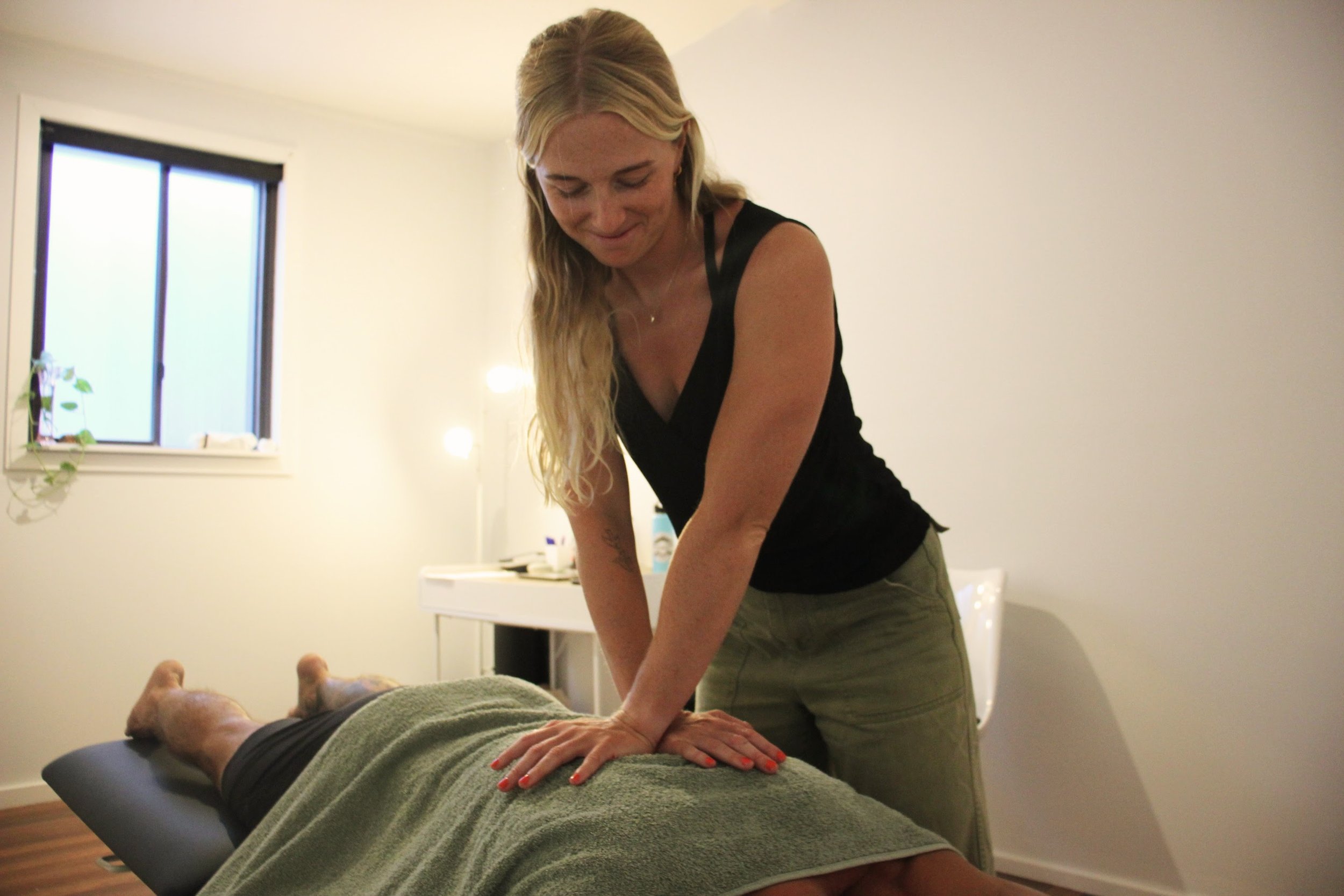What’s involved in a chiropractic appointment?
Adjustments & Mobilisations
Chiropractic mobilizations and adjustments, or manipulations, are gentle techniques designed to restore movement and function to the spine and joints. These therapies relieve pain and enhance overall mobility, allowing you to return to daily activities with ease.
Soft tissue work, active release techniques, massage
Soft tissue techniques address muscle and connective tissue issues. These methods target overused muscles, tendons, ligaments, and nerves through manual pressure and precise movements for pain relief and improved function. Together, these approaches empower individuals to regain movement and enhance quality of life.
Dry needling & Cupping
Dry needling is a therapeutic technique that involves the insertion of thin needles into specific muscle trigger points to relieve pain, improve mobility, and enhance overall wellness. Cupping is a therapeutic technique that involves placing special cups on the skin to create suction. This suction can help improve blood flow, reduce muscle tension, and promote relaxation. Cupping can also aid in pain relief and the body's overall healing process.
Advice, Guidance, Goal Setting
Once we identify the root cause of your pain or dysfunction, we will develop a personalized plan that outlines your prognosis and sets specific goals tailored to your unique injury or lifestyle. This plan will also equip you with effective strategies to manage pain beyond the clinic, helping you prevent flare-ups and enhance your overall well-being.
Rehab exercise prescription
Rehab exercise prescription is a dynamic process that evolves in tandem with the healing of an injury. Initially, exercises focus on gentle movements to restore range of motion and reduce pain, emphasizing mobility and flexibility to accommodate the injured area. As strength and stability improve, the exercises gradually progress to include more challenging strength training and functional movements tailored to the individual's needs and goals. This adaptive approach not only supports recovery but also builds resilience, ensuring a solid foundation as individuals return to their desired activities, thus enhancing their overall quality of life. Regular reassessment and modification of the exercise program are crucial to ensure optimal healing and empowerment throughout the rehabilitation journey.
FAQs
-
Chiropractors diagnose and treat musculoskeletal issues, focusing on the spine, joints, and nervous system, often using manual adjustments and other therapies.
-
Yes, chiropractic care is generally safe when performed by a qualified professional. Side effects, if any, are typically mild and temporary.
-
Chiropractic care can help with back pain, neck pain, headaches, sciatica, joint pain, sports injuries, and posture issues, among other conditions.
-
Yes, chiropractors often treat sports injuries, improve performance, and support recovery through adjustments, mobility work, and rehabilitation exercises.
-
Many insurance plans cover chiropractic care, but coverage varies, so check with your provider.
-
Yes, chiropractic care is safe during pregnancy and can help with back pain, pelvic alignment, and preparing for labor.
Condtions we treat
Back Pain
This is our bread and butter. Chiropractic care and fitness coaching can help with:
upper - mid back pain
low back pain
disc herniations
sciatica
chronic low back pain
Neck Pain
whiplash associated disorders
headaches & migraines
cervical disc herniations
common neck aches and pains.
Joint & extremity pain
Shoulder pain (e.g., rotator cuff issues, impingement)
Elbow pain (e.g., tennis elbow, golfer’s elbow)
Wrist pain (e.g., carpal tunnel syndrome)
Hip pain
Knee pain
Ankle pain (e.g., sprains)
Headaches & Migraines
Tension-type headaches
Cervicogenic headaches
Migraines
Sports injuries
Muscle strains
Ligament sprains
Overuse injuries
Other Condtions
TMJ (jaw) disorders
Plantar fasciitis
Rib dysfunctions
Nerve-related issues (e.g., numbness or tingling due to nerve compression)





